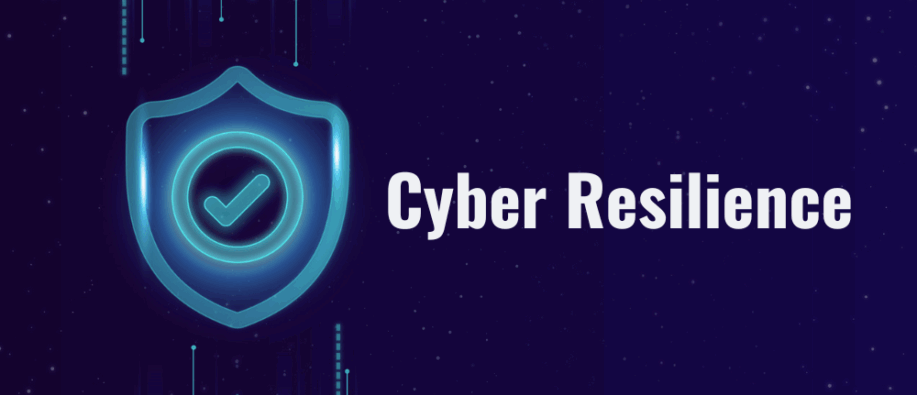The cost of data breaches on average was an irksome $4.9 million in 2024. So, reliance only on traditional methods of cybersecurity for organizations is absurd. New ways of approaching cybersecurity to stay determined and functional in this environment of digital hostility must be adopted by businesses. That new way can be cyber resilience.
Beyond prevention, it gives organizations the means to efficiently identify, address, and recover from cyber threats.
In this blog, we will address the importance, components, and how cyber resilience helps businesses.
Cyber Resilience: What Is It?
The ability of an organization to resist, bounce back from, and adjust to cyberthreats while continuing to conduct business is known as cyber resilience.
Cyber resilience guarantees that companies can swiftly recover from attacks, reducing downtime and disruptions, in contrast to traditional cybersecurity, which is primarily focused on protection and defense.
Why is Cyber Resilience Important?
For business continuity, a cyber resilience plan is essential. Beyond improving an organization's security posture and lowering the possibility of exposure to its vital infrastructure, it can offer advantages. Additionally, it lessens monetary loss and harms one's reputation.
Moreover, a company can inspire confidence in its clients and customers by obtaining cyber resilience certification. Additionally, by operating effectively and efficiently, a cyber-resilient business can maximize the value it generates for its clients, boosting its competitive edge.
Softening Financial Fiasco: A loss of money could cause stakeholders in the business, including shareholders, investors, staff, and customers, to lose faith in the company. Over 50% of companies had a cybersecurity event that interfered with business and IT operations. Recovery expenses are soaring, from operating downtime to paying ransomware demands. Resilience lowers these expenses.
Compliance with Regulations: Organizations are required to maintain strong data protection measures by laws like the CCPA and GDPR. While avoiding steep fines, cyber resilience guarantees compliance.
Trust of Customers is a must for the business: Following a breach, a speedy recovery reduces harm to your brand and preserves consumer confidence.
Components of Cyber Resilience:
Foundations of Cyber Security: The foundation of any strategy for cyber resilience is cybersecurity. It consists of a number of techniques and tools to defend your systems against possible dangers. These consist of intrusion detection systems to keep an eye on and react to questionable activity, firewalls to prevent unwanted access, endpoint protection to safeguard devices, and encryption to safeguard private information.
Management of Risk: The continuous process of risk management includes regularly identifying, assessing, and mitigating vulnerabilities in your systems. This entails looking for possible threats, quickly fixing known software flaws, and putting in place more robust access controls like multi-factor authentication. Penetration testing, for instance, can identify possible points of entry for attackers, enabling you to fortify defenses beforehand.
Training the Professionals: Employee training is an essential part of your cybersecurity strategy because human error is still one of the main causes of data breaches. Provide regular training to your staff on how to spot phishing attempts, make secure passwords, and steer clear of dangerous habits like clicking on dubious links.
Additionally, give employees practical simulations to help them recognize and address threats in real-world situations. An additional line of defense is provided by a skilled workforce, which greatly lowers the possibility of successful attacks.
Flow of Business: The ability to sustain operational viability and carry-on providing services after a brief incident that interrupts business is known as business continuity. In an organization's quest for business continuity, it can be a crucial ally.
Due to the extensive and prolonged disruption caused by the health crisis, business continuity has been put to the test. Organizations are reviewing their business continuity plans, evaluating their limitations, and creating more thorough business resilience plans as part of strengthening them.
Failure Recuperation: An organization can implement a set of protocols, instruments, and guidelines known as disaster recovery to restore mission-critical operations. These can be put into place after a catastrophic incident, like a natural disaster, extended power outage, or cyberattack.
How does Cyber Resilience Help Businesses?
Reduction in Downtime: Make sure that even in the event of a cyberattack, your company's operations continue to function normally. You can reduce disruptions, prevent expensive interruptions, and preserve productivity during crucial times with adequate planning and strong security measures.
Reduction in Expenses: Taking preventative measures in cybersecurity lowers the costs of recovering attacks, including data restoration, penalties, and reputational harm. Being prepared allows you to focus more on growing your company and less on resolving issues.
Customer-Centric Approach: A robust company shows clients that their information is secure. Because consumers are more inclined to trust companies that put their privacy and security first, this increases brand confidence and cultivates enduring loyalty.
Improvement in Risk Management & Compliance: You can drastically lower possible risks before they become serious problems by proactively fixing vulnerabilities in your systems. An effective risk management strategy enables your company to recognize threats early and put mitigation plans in place. Adhering to privacy and data security laws shields your company from severe fines and legal issues. Maintaining compliance protects your brand and establishes you as a trustworthy and accountable company in the eyes of consumers and regulators.
Getting Started with Cyber Resilience:
We have seen that however good the cybersecurity, it still cannot offer 100% security. But cybersecurity always gives us a strong layer of protection.
We've listed the key stages to help you build robust cyber resilience strategies.
1. Understand that total cybersecurity is unachievable
Businesses must adopt a expansive perspective on cyber risk and the various ways that bad actors could use cyberspace to undermine their operations, financial success, or reputation. In addition to improving an organization's reputation, investing in cyber resilience can lower the financial costs of cyber events such as data breaches and intellectual property loss.
2. Identify and Prepare for the Obstacles
When incidents happen, plans must be prepared that reflect and safeguard the organization's primary operational, financial, legal, and diplomatic priorities.
3. Integrate cyber resilience in organization's procedures
Create business procedures that will put the company in a strong position to absorb and bounce back from events, as well as strong backup plans for when systems go down. In the event of a cyber disruption, business procedures must be modified to guarantee that stakeholder interests are safeguarded, and service standards can be upheld.
Organizations must actively work with external parties who share their interest in enhancing the resilience of the entire business environment in order to achieve true cyber resilience.
4. Protect the Sensitive Materials
Implement information governance procedures that can reduce the effects of data integrity and confidentiality violations.
5. History is the Best Teacher!
Organizations must adjust procedures considering lessons learned from previous incidents, including those that have impacted their fellows.
Looking Forward to a Resilient Future!
It is no longer optional to be cyber resilient. Businesses that don't adjust run the risk of suffering significant financial and reputational harm. In an uncertain digital world, companies can preserve continuity, remain compliant, and foster trust by implementing proactive strategies, utilizing real-time monitoring, and concentrating on recovery solutions.
If you want to learn more about security, visit SecureITWorld!
Recommended For You:





